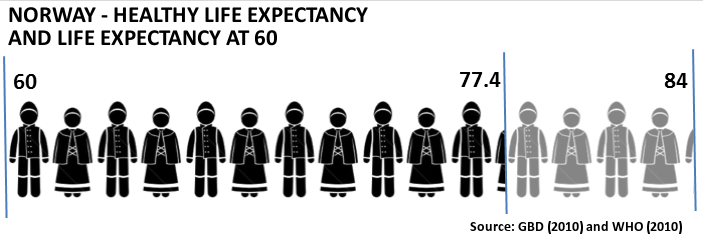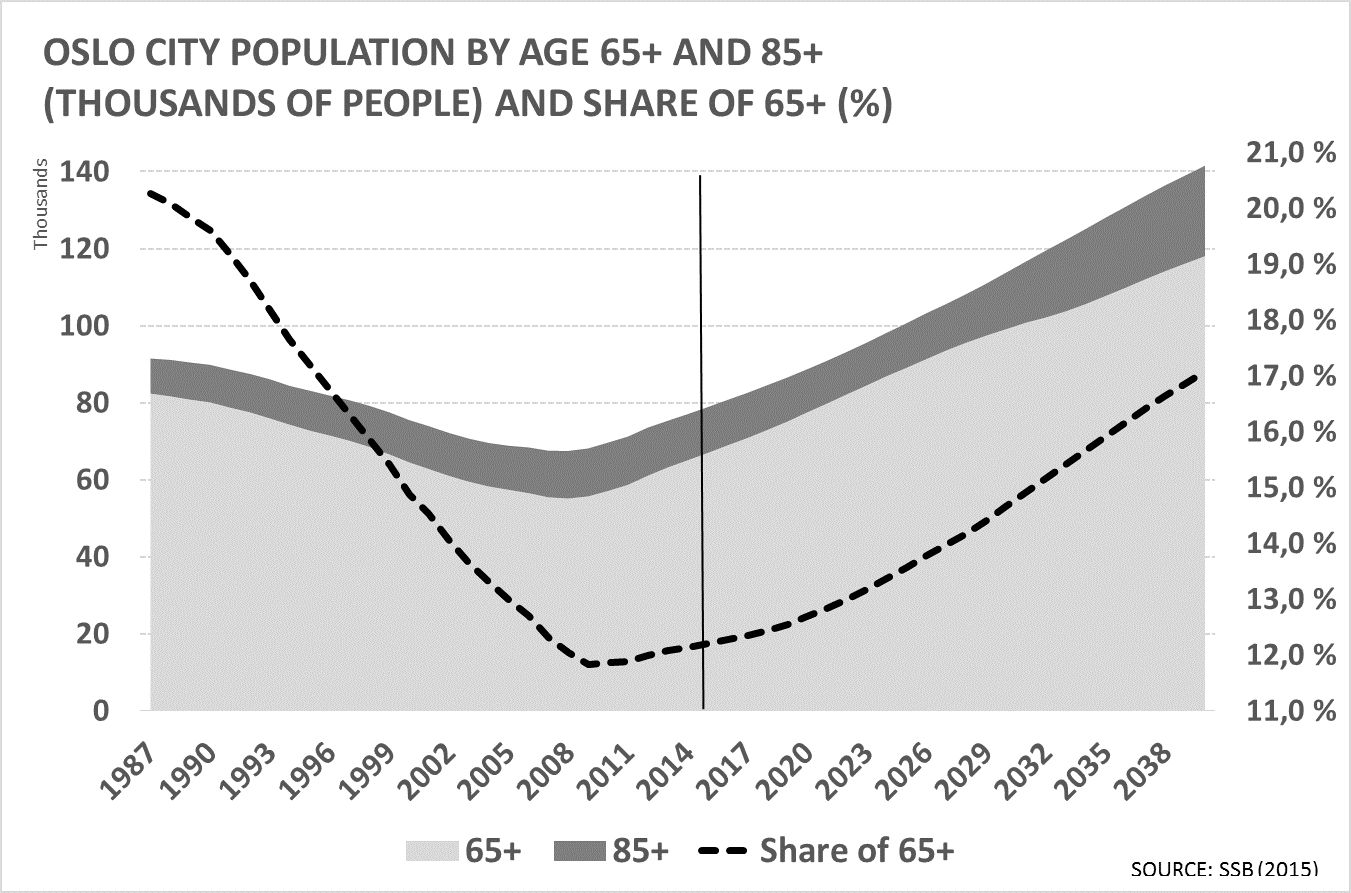 After completing their 60th birthday, the average Norwegian can expect to live for another 24 years. Within these, he or she can also expect to have almost 18 years of good health.
After completing their 60th birthday, the average Norwegian can expect to live for another 24 years. Within these, he or she can also expect to have almost 18 years of good health.
In Oslo, this fantastic human achievement has already transformed the landscape, but the coming years will bring new challenges.
In 25 years, the older-person population in Oslo will almost double
When we look at the demographic projections, even the more conservative scenarios reveal that the share of older persons living in Oslo is growing.
If the increase of the absolute number of older dwellers represents a challenge per se, it is also important to recall that the share of older persons within the total population is actually much lower – 12% – in comparison to what we had in the 80’s, when more than 20% of the population was 65 years or older.
Towards an age-friendly Oslo
Oslo City Council has already started to take important steps towards a better preparation for the population ageing challenge. On May 16th, 2014, Oslo was accepted as a European member of the WHO Global Network of Age-friendly Cities and Communities (GNAFCC), which represented a firm political commitment to the values and principles of the WHO.
The materialization of these promises will depend highly on the participation of older citizens in the city-making process. It is also important to have in mind that the older persons in 2040 will be significantly different than today’s; hence will also have different needs. Another fundamental aspect to keep in mind is the notion that the decisions we make today will have long-lasting – and sometimes collateral – impacts. They should be weighted and evaluated under an intergenerational solidarity perspective.
The emergence of gerontolescence
As we described before, not only will the share of older persons increase, but this group will also grow older. The increase of human longevity is a new and powerful phenomenon. The implications are so deep that many researcher are calling it the longevity revolution.
As explained by Professor Alexandre Kalache (see video), the end of the Second World War and the intensification of the urbanization process allowed a substantial change in the societies and family organization. Baby boomers in the developed world finally had the privilege of living in peace and could afford a period of “experimentation”. At that time, the meaning of adolescence was strictly related to the study of hormones and not to the social construction we know today. To Kalache, the transformation we are witnessing on the older parcel of the population is very similar: the creation of a gerontolescence.
Ready or not?
Oslo is definitely in a good position to face the challenges posed by the longevity revolution. Norway’s natural resources management and investment in the universal provision of medical care and education are just two examples of policies that are already creating a better city for all ages.
However, the longevity revolution will demand much more. The creation of an inclusive and enabling environment requires a re-foundation of the relationship of the city and its older dwellers. It demands a rupture with the well-established stereotypes about older persons, and the recognition that addressing today’s challenges won’t necessary prepare us for the future.
Note: When we discuss city planning, we cannot forget the fundamental relationship cities have with their surroundings. To give an idea about the importance of this relationship In Oslo, it is enough to say that almost one in every four employees working in Oslo live in a different municipality. Nevertheless, we will have to come back to regional analysis in a different post.

